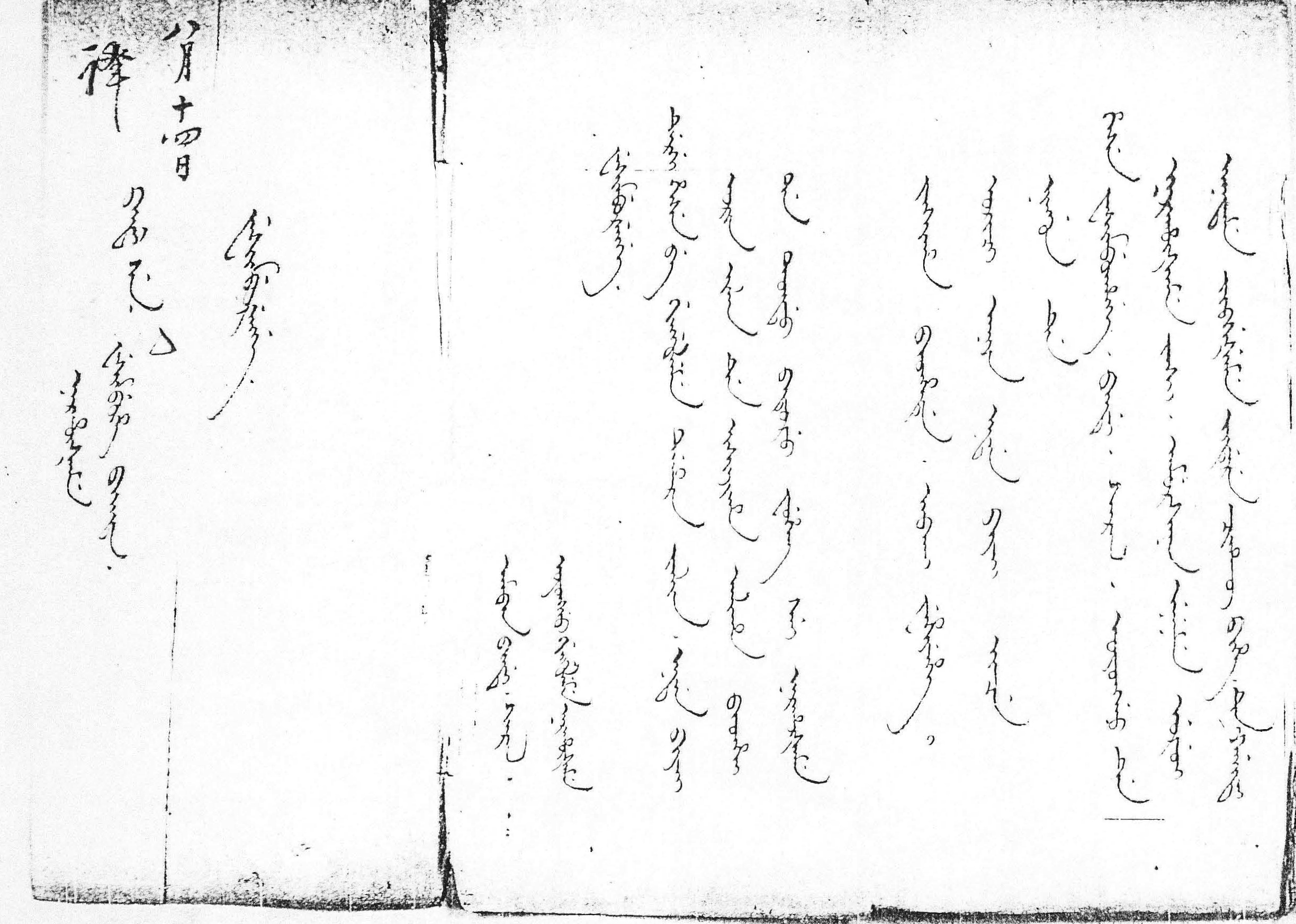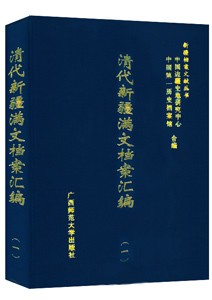For some time anticipation has been building over the publication of a major collection of Manchu-language documents on Xinjiang, Qingdai Xinjiang Manwen dang’an huibian 《清代新疆满文档案汇编》. The good news is that this massive collection, drawn from the holdings of the First Historical Archives in Beijing, was published in December 2012, and copies are now beginning to reach US libraries. The publication of these materials promises to revolutionize the study of Qing Xinjiang.
Published by Guangxi Normal University Press, and edited by Wu Yuanfeng 吴元丰 and Li Sheng 厉声, the set reproduces 72,812 documents in 283 volumes, covering the period from 1730 to 1911 (there are a very small number of undated items), meaning an average of 257 documents per volume. With the exception of a very few bilingual items, all documents are entirely in Manchu. According to the preface, they represent the Xinjiang-related archives listed in the twelve-volume catalogue, Qingdai bianjiang Manwen dang’an mulu 《清代边疆满文档案目录》, published in 1999, which took up about one-half of that catalogue.
Many document types are represented, including palace memorials (zouzhe 奏摺), edicts (shangyu 上諭), court letters (jixin 寄信), and attachments (fujian 附件), taken from the monthly memorial packets滿文月摺包 into which they had been bundled in the Qing; many memorials bear original imperial rescripts (zhupi 硃批). For technical reasons, facsimiles are all of a uniform size (generally smaller than the original), but the quality of the printing is clear enough that one has no difficulty reading the text. There is a table of contents at the beginning of each volume, usually about 12-14 pages long. Documents are listed there in chronological order, accompanied by a brief summary (usually one line) and the page number on which the beginning of the document may be found in the main text.
Less happy news is that there is no comprehensive table of contents for the entire set; each volume has its own table of contents, so one must look through the table of contents of each volume for documents relevant to one’s research. Unfortunately, there is no indication on the spine of the time span covered by the contents of a given volume (just the number of the volume), nor is there any general listing of volumes, so it will be trial-and-error to find the volume corresponding to the time period one is interested in (not surprisingly, about 40% of materials date from the Qianlong reign). Within volumes, there is no numbering of documents anywhere, either in the table of contents or in the main text. The pages lack any indication (by running header or footer) of date, which complicates browsing; neither is there a clear break between the end of one document and the beginning of the next. The absence of these aids makes utilization of the volumes cumbersome and time-consuming. Until such time as an electronic finding resource appears, one can search only by repeated reference, volume by volume, to individual tables of contents and by confirmation of the internal date in the document.
Regardless of these limitations, the publication of Xinjiang Manwen huibian is is a watershed in the history of Manchu studies. Recognition of the importance of providing originals, and not simply Chinese translations, of Manchu documents is now official. Congratulations to the editors for bringing off this impressive accomplishment, which will serve as an invaluable resource for Manjurists and historians of the Qing frontier now and for generations to come. For more detail on the value of Manchu documents for the study of Xinjiang, see the 2011 article by Wu Yuanfeng here.


